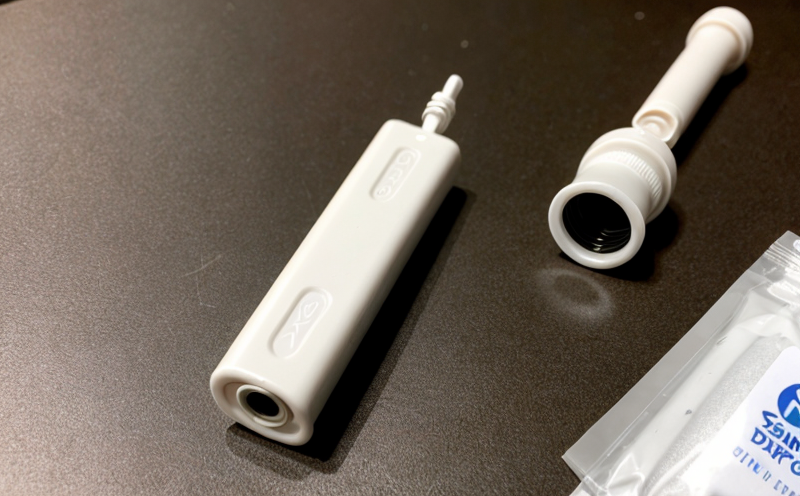USP Sterility Testing for Single-Use Devices
The sterility of single-use devices is a critical aspect in ensuring patient safety and compliance with international standards. USP Sterility Testing is specifically designed to determine whether a medical device contains any viable microorganisms that could pose risks during use.
This testing method employs aseptic techniques and culture-based procedures, which are validated under stringent conditions to ensure accuracy and reliability. The process involves the inoculation of test samples into appropriate media and incubation periods to detect the presence of microbial growth.
The significance of sterility testing extends beyond just compliance; it plays a pivotal role in protecting patient health and ensuring that healthcare providers can trust the devices they use. Compliance with USP is essential for manufacturers, as non-compliance can lead to recalls, legal issues, and loss of market share.
The test typically involves several steps: sampling, preparation, inoculation into culture media, incubation, and interpretation of results. Each step must be meticulously followed to ensure the accuracy of the test results. The use of advanced aseptic techniques minimizes contamination risks, ensuring that only the device itself is being tested.
The acceptance criteria for sterility testing are strictly defined by USP . Devices failing this test are considered non-sterile and must be reprocessed or discarded according to manufacturer guidelines. This stringent process underscores the importance of adhering to regulatory standards in medical device manufacturing.
Compliance with USP is not only a legal requirement but also an ethical obligation for manufacturers. It ensures that healthcare providers can use devices safely without fear of contamination, thereby enhancing patient outcomes and reducing the risk of infections.
The process involves rigorous quality control measures to ensure consistency in testing protocols across different batches and facilities. This consistency is crucial for maintaining the reliability of sterility tests, which directly impacts patient safety.
Understanding the importance of USP Sterility Testing is essential for any manufacturer or quality manager involved in single-use device production. It underscores the commitment to patient safety and regulatory compliance, ensuring that only sterile devices reach the market.
Applied Standards
The USP Sterility Testing method is meticulously detailed within the United States Pharmacopeia (USP) monograph. This standard provides comprehensive guidelines for performing sterility testing, including sample preparation, inoculation procedures, media selection, and interpretation of results.
The USP protocol emphasizes the importance of aseptic technique throughout the entire testing process to minimize contamination risks. It also outlines the use of appropriate culture media that support microbial growth, ensuring accurate detection of viable microorganisms.
The standard specifies incubation periods and environmental conditions necessary for optimal microbial growth and observation. Compliance with these parameters is crucial for obtaining reliable test results.
In addition to USP , other relevant standards include ISO 11737-1, which provides a general guideline for sterility testing of medical devices, and EN ISO 11737, which applies specifically to single-use medical devices. These international standards complement the USP guidelines by providing additional context and acceptance criteria.
Adherence to these standards ensures consistency in testing protocols across different countries and regions, facilitating global compliance for manufacturers. This alignment with international standards is essential for maintaining quality control and ensuring patient safety worldwide.
Benefits
Ensures patient safety by eliminating the risk of microbial contamination during device use.
Avoids legal issues and product recalls due to non-compliance with regulatory standards.
Maintains brand reputation and trust among healthcare providers and patients.
Saves costs associated with post-market recalls and product liability lawsuits.
Facilitates smoother compliance audits by regulatory bodies such as the FDA and EMA.
Enhances the overall quality of medical devices, leading to better patient outcomes.
By adhering to USP Sterility Testing standards, manufacturers can significantly reduce the risk of post-market complications, thereby protecting both patients and healthcare providers. This ensures that only safe and effective devices reach the market, fostering trust in medical device quality.
Environmental and Sustainability Contributions
Reduces environmental impact by minimizing waste associated with non-sterile devices.
Promotes sustainable practices through rigorous quality control measures, reducing the need for reprocessing or disposal of contaminated devices.
Supports circular economy principles by ensuring that only sterile and safe devices are used in healthcare settings.
The environmental benefits of adhering to USP Sterility Testing extend beyond patient safety. By minimizing the risk of microbial contamination, these tests contribute to a more sustainable healthcare industry. This approach reduces waste and promotes the responsible use of resources, aligning with broader sustainability goals.





